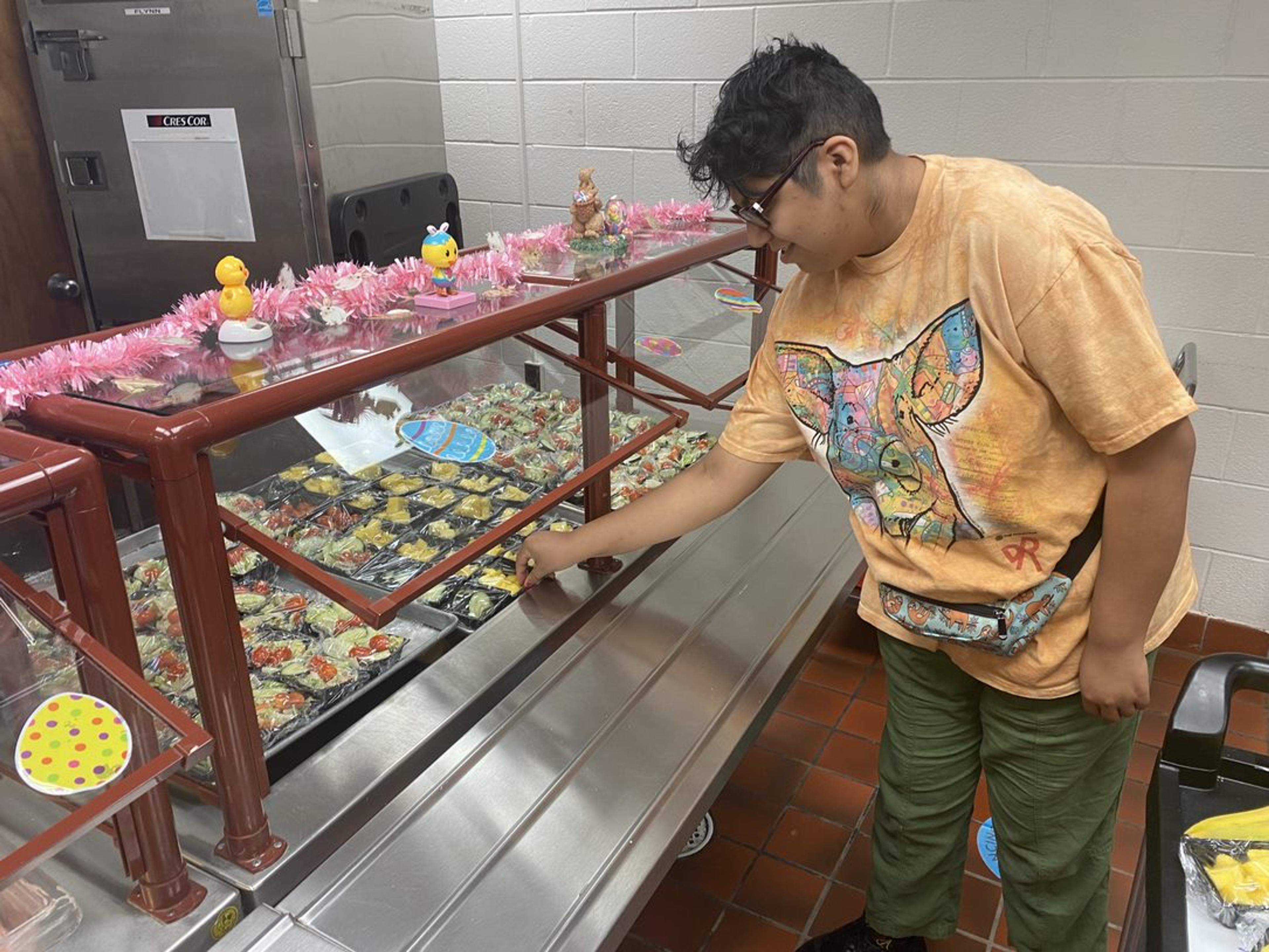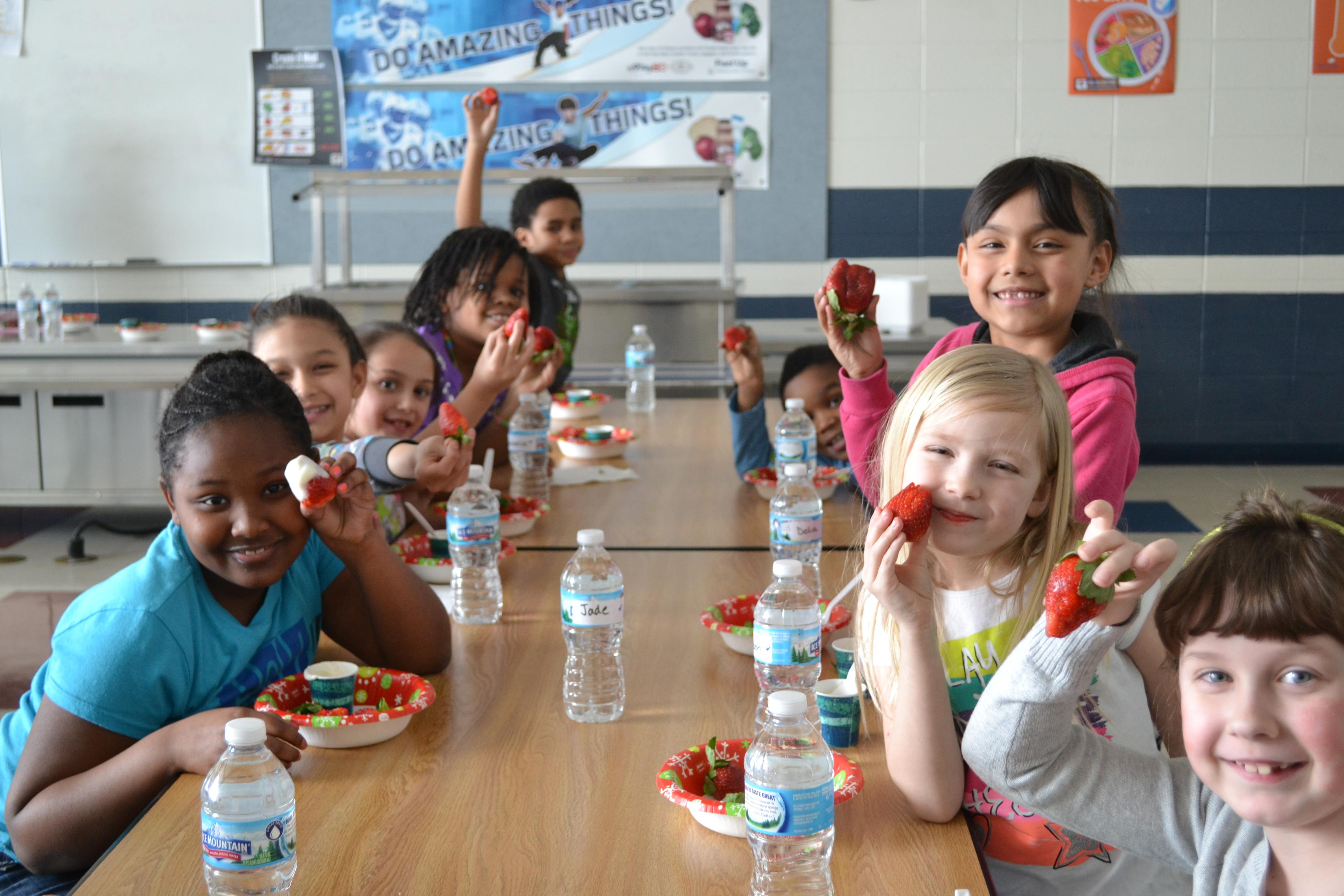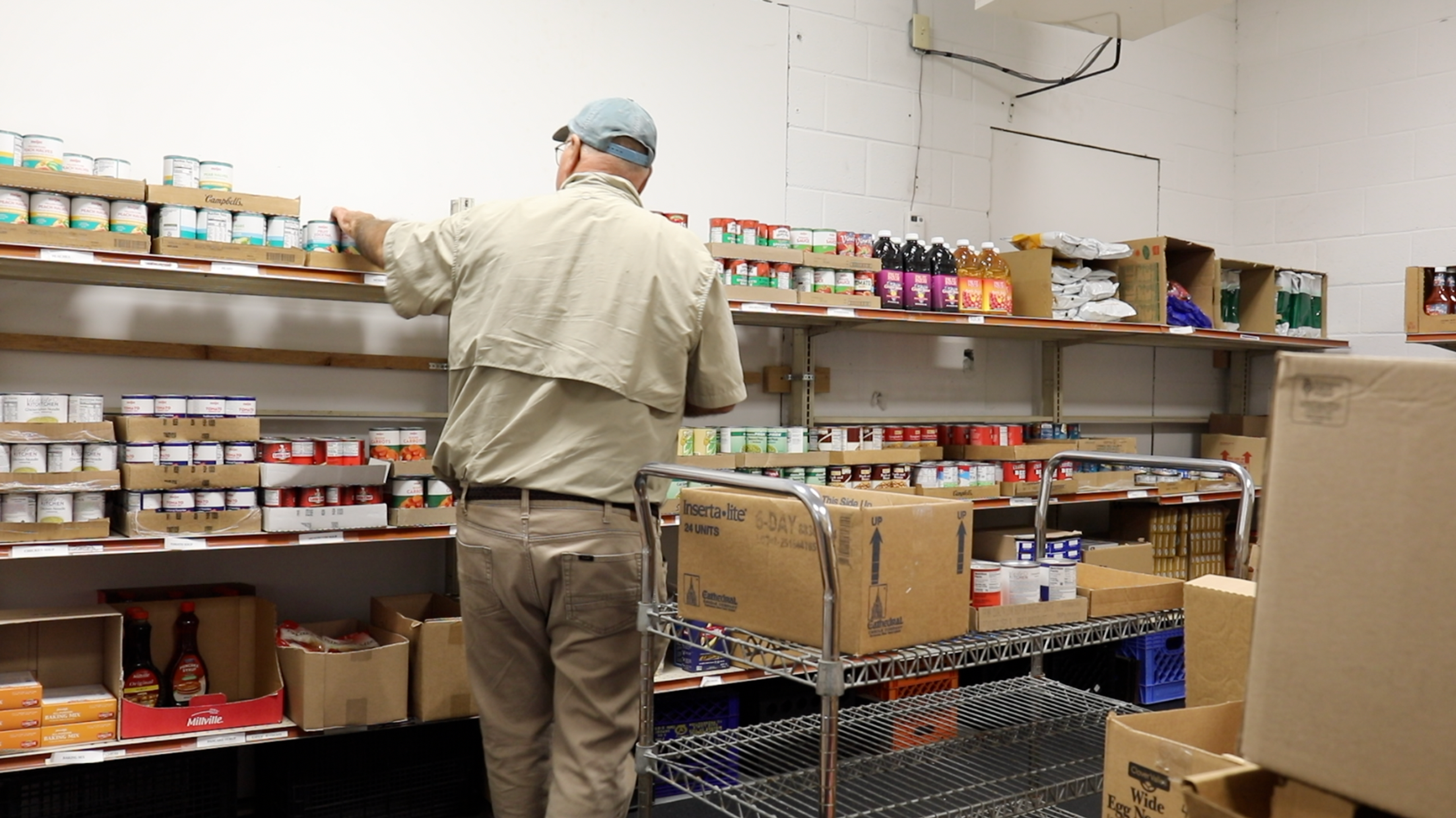Nutrition Program Makes a Difference for Students with Autism in Macomb County
Amy Barczy
| 6 min read
Amy Barczy is a former brand journalist who authored content at Blue Cross Blue Shield of Michigan. Prior to her time at Blue Cross from 2019-2024, she was a statewide news reporter for MLive.com. She has a decade of storytelling experience in local news media markets including Lansing, Grand Rapids, Holland, Ann Arbor and Port Huron.

For individuals with autism spectrum disorder, getting adequate nutrition can be an issue.
Some individuals with autism may have food aversions or sensitivities that affect the types of food they consume, and others may have behavioral issues like ritualistic eating patterns that interrupt mealtimes. A recent analysis of published research found children with autism are more likely to have inadequate nutrition when compared to children without autism – including an overall low intake of calcium and protein.
These nutrients are critical for a child’s growth and development – to build strong muscles and bones, grow strong minds and support their whole health.
Carolyn Thomas is the child nutrition consultant with the Macomb Intermediate School District. In her role, she oversees school-based food programs and helps direct the day-to-day food and nutrition options for students with special needs and those with autism spectrum disorder.
“The work that goes into making the special needs student population successful is Herculean,” Thomas said. “When you’re able to help the kids consume the good foods that will get them the nutrients they need to be successful – I’ve never really actually worked in a better place. It’s a wonderful environment.”
Recently, one of the schools Thomas works with – the John A. Bozymowski Center Secondary Autism Program in Sterling Heights – added a new health education lesson to introduce more nutritious options for students in grades 6 to 8 with special needs and those with autism. The results have been exciting for staff – and ultimately, a boost of nutrition for students.
Each month teachers introduce a new fruit or vegetable – teaching students about the nutrition behind the raw ingredient. Then, students get to try the fresh produce as part of a delicious dairy-rich smoothie first through classroom taste testing and then in the cafeteria during school breakfast or lunch.
“Students love it. They call it ice cream,” Thomas said. “One of the biggest benefits is the actual consumption of nutrition, with dairy, fresh fruits and vegetables. A smoothie packs a punch: milk and yogurt for calcium and protein and then a good amount of fiber because we’re not stripping the skin off of the fruits and vegetables.”
Building Healthy Communities
The John A. Bozymowski Center Secondary Autism Program received a commercial-grade blender to offer healthy smoothies to students during school breakfast and lunch times through the Building Healthy Communities program. Schools receive the equipment, a school meal recipe guide, marketing materials and support for student taste testing as part of the program. The blender can also be used for other school events to serve smoothies, yogurt dips for fruit and vegetables, bean dip or other healthy items.
It’s one of the many resource options available to Michigan schools through the Building Healthy Communities program. The program, founded by Blue Cross Blue Shield of Michigan in 2009, is possible through a partnership of multiple statewide organizations including the Michigan Department of Education, Michigan Department of Health and Human Services (MDHHS), Michigan Elementary and Middle School Principals Association (MEMSPA), Michigan Fitness Foundation, Michigan Recreation and Park Association, Michigan State University Extension, Michigan Virtual, OK2SAY, SHAPE Michigan, United Dairy Industry of Michigan, the University of Michigan and Wayne State University Center for Health and Community Impact.
“We’ve seen the wide-ranging impact Building Healthy Communities has had on Michigan schools and children,” said Ken Hayward, vice president and special assistant to the president for Community Relations at Blue Cross. “Reaching over a half-million students since BHC began is a not only a massive milestone in itself, but also most importantly we’re proud to be leading children on a path of building healthier lives. Our work continues in ensuring all Michigan schools have this opportunity to create cultures of wellness within their local communities.”
Building Healthy Communities empowers schools with curriculum, resources and support to help teach students healthy behaviors for life.
“United Dairy Industry of Michigan and Michigan Dairy Farmers are excited to be part of a program that demonstrates a life-changing impact on student well-being both in and out of the classroom. Providing resources like nutrition education, equipment, and fun, engaging ways to access to healthy foods, such as milk and yogurt in a smoothie, is something we take great pride in,” said Brianna Henton, health & wellness director at United Dairy Industry of Michigan. “John A. Bozymowski Center showcases the full circle impact on how a well-rounded program led by passionate school staff can help drive towards a healthier school environment.”
Program in action
The smoothie resource from Building Healthy Communities offers a way for every student at the John A. Bozymowski Center Secondary Autism Program to be able to practice lessons learned from classroom nutrition education. Some students at the school have feeding and eating needs and challenges. Thomas said some students have sensory needs and preferences as well. Consuming a whole apple, for example, may be a challenge, and some students may need sliced apples, others may need applesauce and others may need apple juice, Thomas said. Smoothies offer a universally accessible way to experience fresh produce.

“Once we started implementing and tying nutrition education with taste testing, it’s made a large difference in the consumption of fresh fruits, vegetables and dairy – as well as the expanded offerings,” Thomas said. “A lot of our students don’t get exposed to the types of things that we are able to expose them to.”
Since smoothies are popular outside of school with youth, school food service departments can capitalize on this trend by providing students with a well-balanced, nutritious meal option that can meet a variety of taste preferences.
“It’s wonderful because they actually choose it and take it – and they’re having a better meal experience,” Thomas said.
Offering school meals that students enjoy eating is incredibly important, Thomas said. Breakfast is designed to account for 25% of a student’s daily nutritional intake, and lunch is designed to provide up to 1/3 of the daily intake.
“We have up to 75% of dietary allowance that we’re responsible for at school – and we take that responsibility seriously,” Thomas said. “Building Healthy Communities is such an amazingly good program. I’m very grateful for the community partners we’ve developed over the years.”
Resources to support school meals and nutrition education are just one part of the offerings to schools in Michigan through the Building Healthy Communities program. The program is now taking applications for the 2023-24 school year. All public, charter and private nonprofit schools in the state are encouraged to review the full program descriptions and eligibility information at www.bcbsm.com/buildhealth.
Photo credits: Courtesy of Macomb ISD





